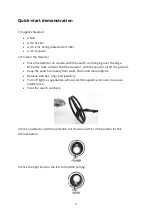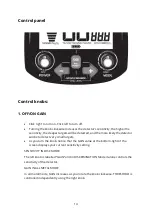
20
Using PINPOINT
Press and hold the Pinpoint button to narrow down the location of a buried metal
object. Pinpoint is a mode of detection which does not require the search coil to be in
motion.
A motionless search coil held over a metal object will induce a hum; volume and
pitch of the hum increase with target strength.
The approximate target depth, in inches, will be indicated in the centre of the screen.
The depth scale is calibrated to coin-sized objects.
Relative depth is indicated for larger or smaller objects.
Upon releasing the button, you will return to the motion DISC Mode.
If you keep the Pinpoint button depressed for a long time, the audio tone may begin to
drift.
If you plan to search like this, release and re-press the button periodically to
avoid drift. Drift may result in a loudening sound or a reduced sensitivity with no
sound.
See the manual section on Target Pinpointing for how to narrow down a target’s
location.
This technique is indispensable as long-buried metals can look exactly like the
surrounding soil to the naked eye. If you are not adept at pinpointing, digging up
a small metal object can drive you crazy. So learn how to narrow-it-down.
Reading the Display
Tar
get ID
Each time you pass the search coil over a metal object, a 3-digit value will appear in the
centre of the display. See the manual section Target Identification for a better
understand of these values.
Three segments will simultaneously appear above the arc at the top of the screen.
This represents the same target identification.
Target scale
This display works as in the ALL METAL Mode.
The arc across the top classified metal objects.
Each time a target is detected three segments will illuminate above the arc.
The segments will remain illuminated for three seconds.
The indication shows the approximate classification of the buried metal object.
See the section on Target Display for a more detailed explanation.
Iron is on the left. U.S. dimes and quarters are to the far right.
In an air test, gold indicates right of centre – the larger the gold piece, the
farther to the right.
In the ground, the ID of gold may jump around with each pass of the search coil.
















































